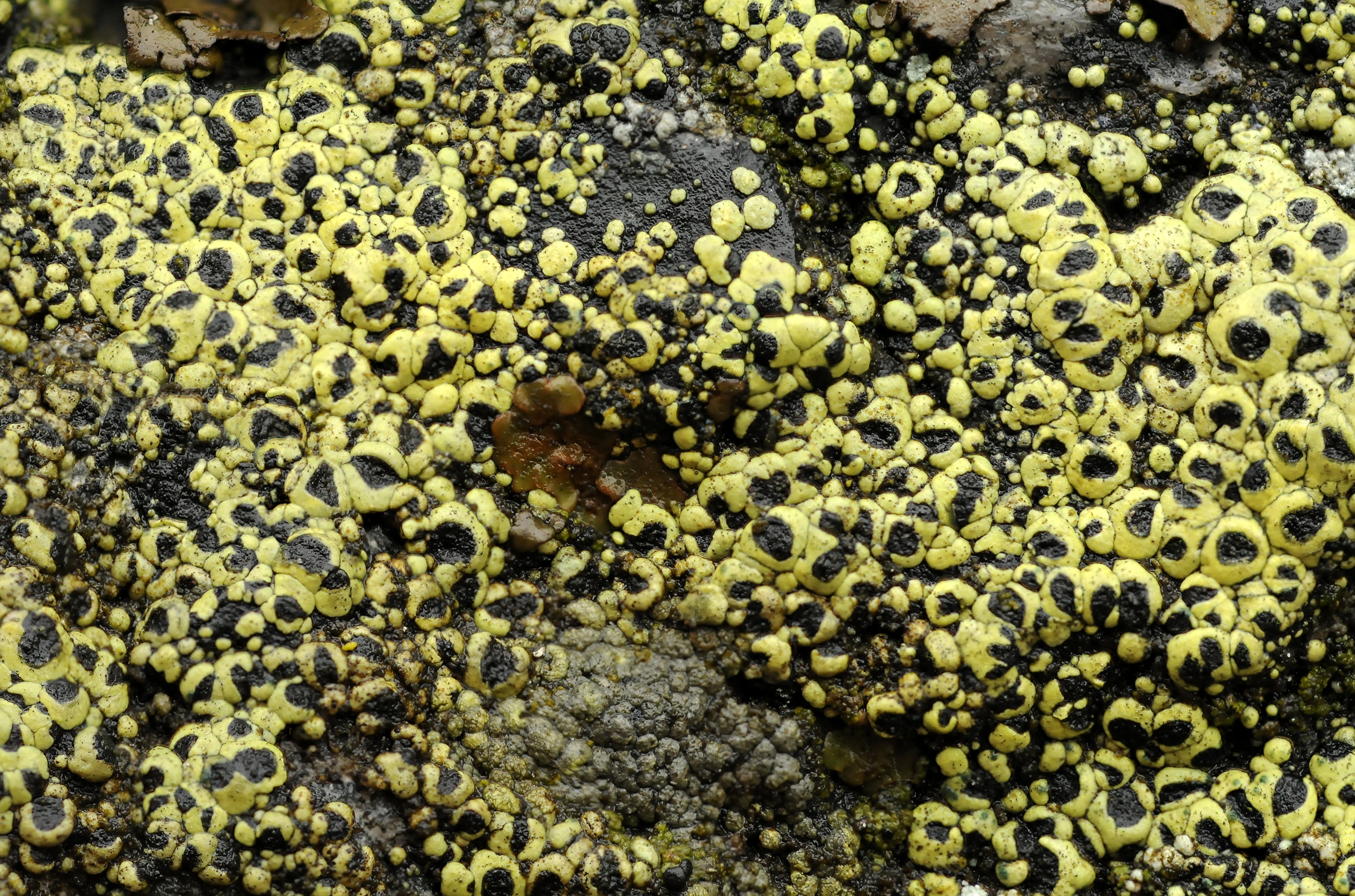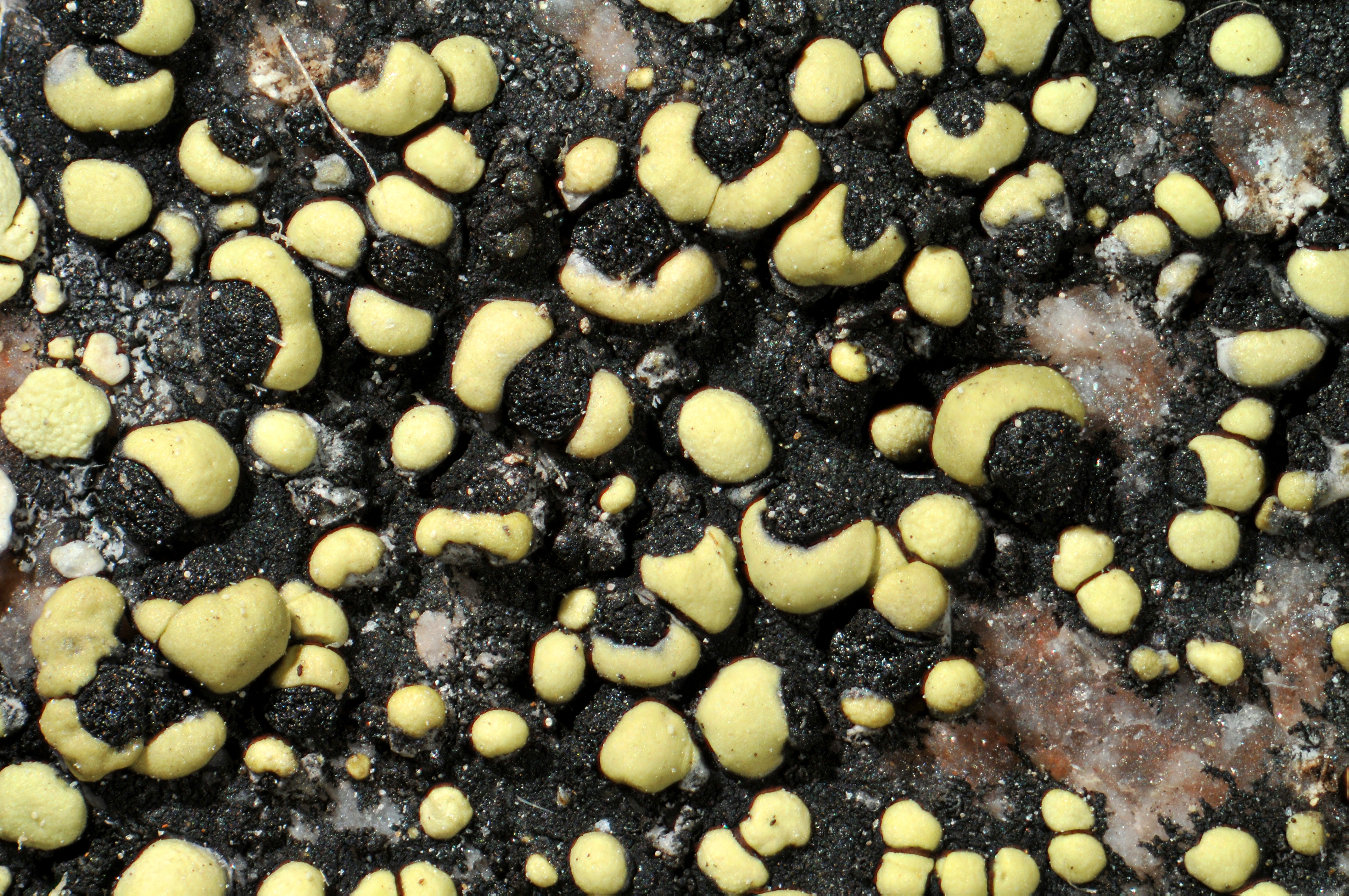Rhizocarpon lecanorinum
- Innhold
- Morphology
- Chemistry
- Habitat
- Comment
- Look-alikes
Morphology
Thallus areolate, usually up to 10 cm diam. but may be irregularly expanding; hypothallus more or less distinct, black; areolae up to 1.2 mm diam., bright yellow to greenish yellow, dull, usually contiguous, partly angular and partly crescent-shaped to fully surrounding apothecia, plane to moderately convex, smooth; medulla KI+ dark violet. – Apothecia up to 1 mm diam., black, epruinose, more or less orbicular, plane, persistently but usually indistinctly marginate; excipulum brownish black in the rim, inner part colourless, K– or K+ faintly red; hypothecium thin, brownish black, K–; hymenium colourless to faintly green; epihymenium pale olivaceous brown, K–; no crystals or granules in the apothecia; ascospores 8 per ascus, eumuriform, dark brown, 27–45 × 11–19 µm. – Conidiomata not seen.
Chemistry
Rhizocarpic and stictic acid; spot tests: medulla PD+ orange, K+ yellow, C–.
Habitat
Pioneer species on rock faces, often at sites exposed to dust, roof tiles, etc. Common in the lowlands.
Comment
Regular crescent-shaped areolae occur elsewhere only in R. ferax which differs in usually forming smaller thalli with more scattered areolae and in containing psoromic acid (PD+ yellow, K–).

